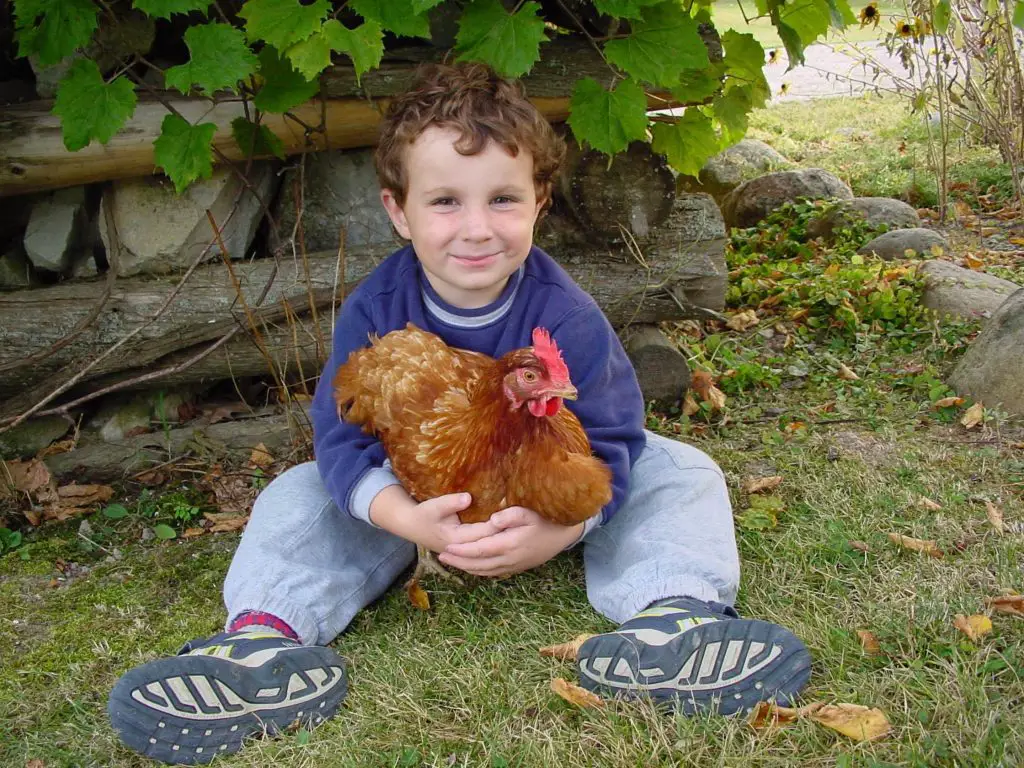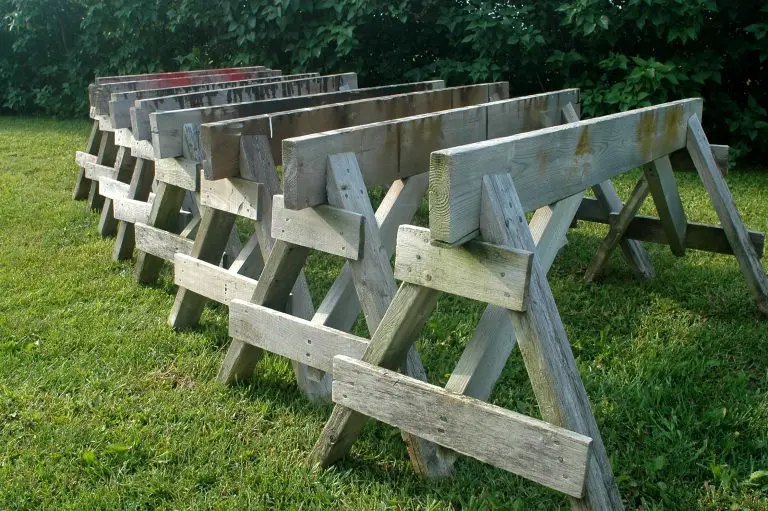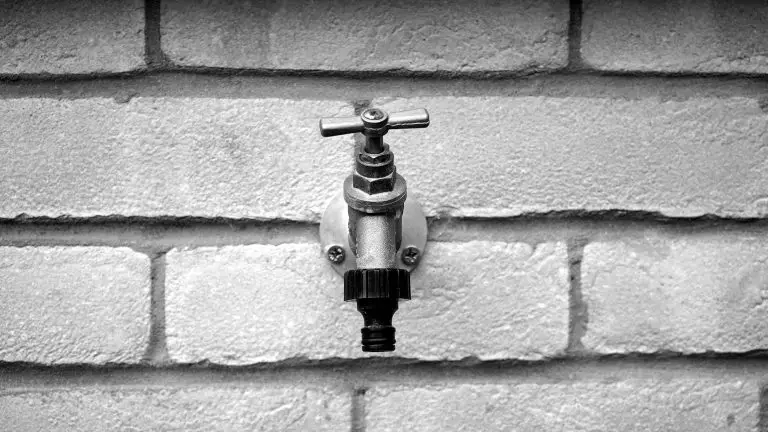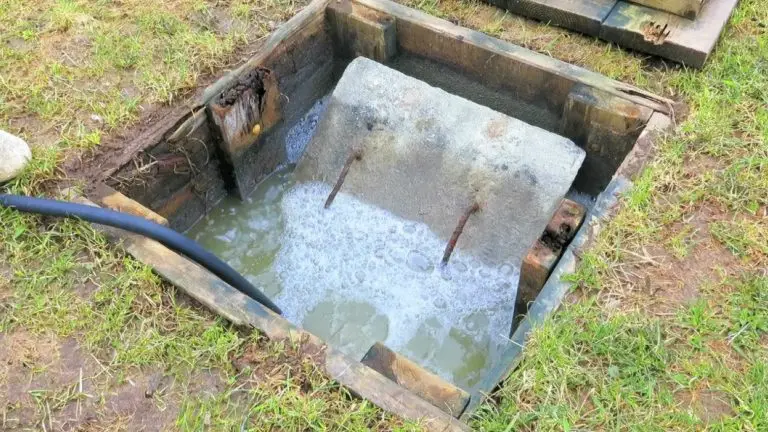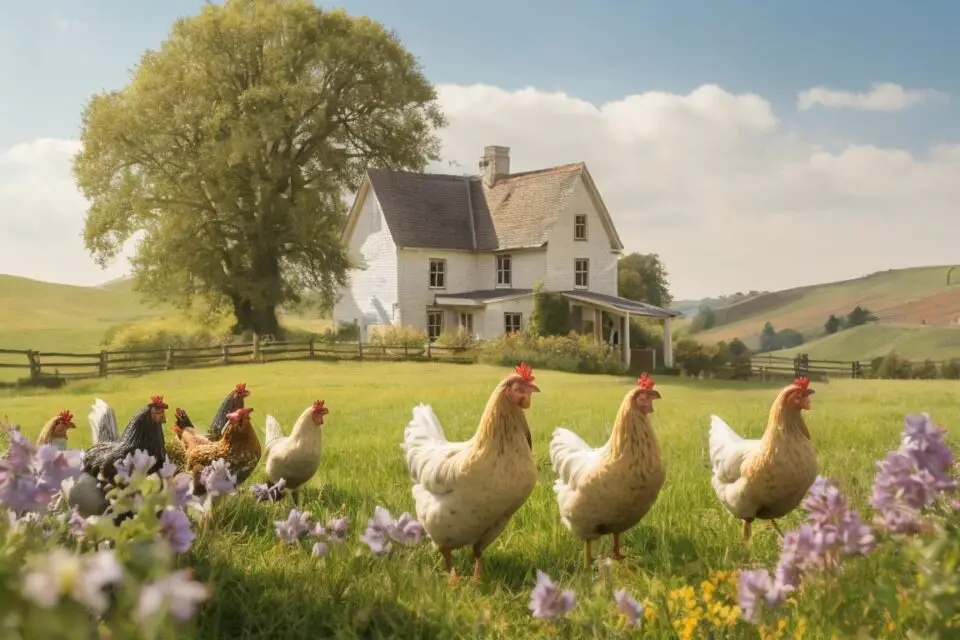
Want plans for building the portable chicken house you see below? You’ll find a download link further along in the article, but for now, let me tell you something about backyard chicken husbandry.
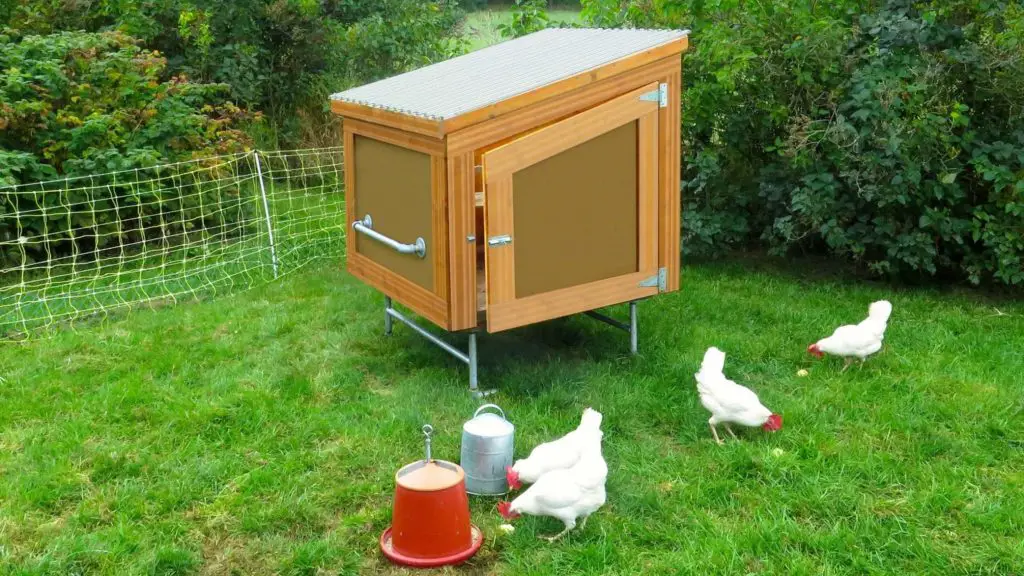
Backyard Chickens Are Surprisingly Fun
When it comes to keeping backyard chickens, I’m always surprised at how many people have an interest in it. If you feeling the attraction, you should give it a try. Even though store-bought eggs are cheap and plentiful, there’s something about keeping chickens that remains attractive. Actually, it’s getting more attractive all the time. Perhaps it’s because too few people have much of a connection with the land any more, yet they crave it on some level. Maybe backyard chickens help create this connection. I don’t know. What I do know is that backyard chickens need a good home if you want to keep them happy and healthy. Proper chicken housing and downloadable plans is what this article is all about.
We began keeping chickens on our Manitoulin Island homestead in 2002. Our youngest boy, Jacob, really took to the birds. You can see him below when he’s two years old with one of the chickens. Jake is 24 now, just about to graduate as a veterinarian.
A young Jacob Maxwell holding one of the laying hens we kept at our place. Early exposure to livestock has given Jacob an accurate perspective on keeping animals. He’s 24 now and a few months from graduating as veterinarian.
Jacob eventually learned to care for our whole flock – everything from raising chicks to slaughtering old hens when they’re ready for the freezer. Our experience with chickens has taught me something that no one made clear to me beforehand. Click below to watch a young Jake bathing a sick chicken.
When it comes to chicken coops, a handful of smaller, semi-portable coops are better than one large, permanently anchored house. I call this approach “modularity”, and I’ve worked this idea into the free plans you can download later in this article.
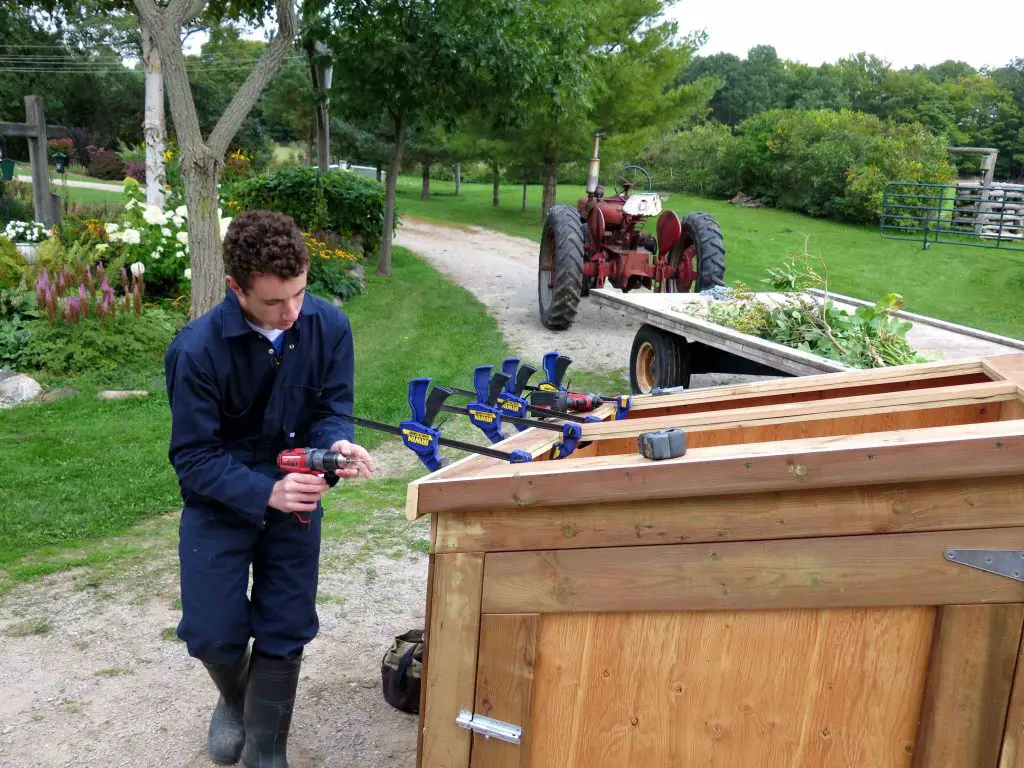
The big problem with permanent chicken houses is that they’re always troublesome and expensive to build. Lack of flexibility means they offer no chance to reduce or expand flock size, either. You’ve got what you’ve got when it comes to coop size. Keeping chickens in one place in a permanent coop turns also that area of your yard into a dusty, vegetation-free wasteland. Permanent coops are also difficult to heat with winter sun – an issue that really matters where I live in Canada.
All this is why I’ve come to prefer one or more smaller, semi-portable backyard “chicken barns” that can be mixed and matched in different ways. We use one to raise day-old chicks, others as production houses for adult birds. Add another house if you want to separate some birds because of disease or bullying. That’s Jacob, above, building a couple of these houses. The modular coop we designed is solid and exceptionally warm in winter because of the clear, solar roof, yet also easily ventilated in summer by hinging open the roof. Simple to build, this design can be moved to new locations when needed. Individual modules can be pulled out of production for a time to break pest cycles, and they’re easy to clean without standing in poop.
Although our solar-heated design looks fancy, it’s really only a box made of 5/8” plywood with trim added. Nothing this substantial could be easier to build. My design sits on legs that raise the structure off the ground, and there are two reasons for this feature. First, it keeps the wood of the coop high, dry and away from rot-promoting soil. Raising the height of a chicken house like this also makes it perfect for winter use in areas that get snow. I used 1” diameter galvanized steel pipes for my chicken house legs, but you could also put it on some replaceable 4x4s.
The opportunity to collect eggs without opening the chicken door is one advantage of the clear, hinged solar roof. Simply swivel the top upwards, prop it open, reach down into whatever nesting box you’re using, then retrieve the eggs. You can also replenish feed and water this way, too. Although hens can get in an out of a very small door, having a large door makes it easier to move feed and water in from the side if you want, and move out manure when it’s time to clean the houses. In my design nearly one whole side swings outwards, with no lip above the floor level. Manure and bedding are easy to scrape out this way, too
There are more details here than I have space for, but you can download free plans for my chicken barn at this link: BaileyLineRoad.com/chickens.
As practical as it is to keep backyard chickens, the real attraction for me is also because these birds are great fun to watch, and excellent for kids growing up. In a world with too many screens in front of us, it’s refreshing to be entertained by something non-digital for a change. Try it and you’ll understand what they mean by “chicken TV”.

I hope this article was useful and interesting. Please consider helping me cover the ongoing cost of producing and publishing content like this. Click the “buy me a coffee” button below for a safe, fast and simple way to help out. Thank you very much!

